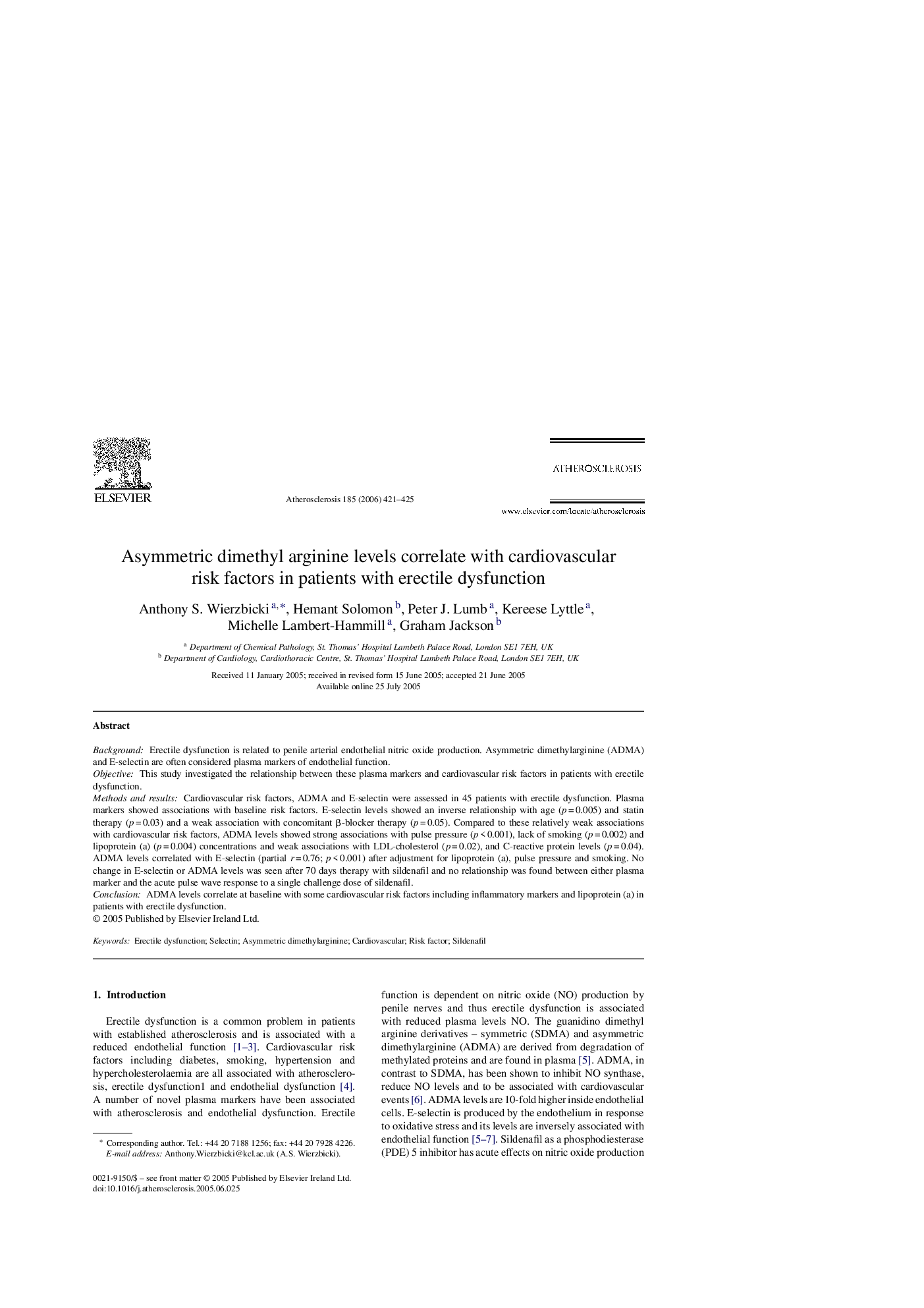| Article ID | Journal | Published Year | Pages | File Type |
|---|---|---|---|---|
| 2895346 | Atherosclerosis | 2006 | 5 Pages |
BackgroundErectile dysfunction is related to penile arterial endothelial nitric oxide production. Asymmetric dimethylarginine (ADMA) and E-selectin are often considered plasma markers of endothelial function.ObjectiveThis study investigated the relationship between these plasma markers and cardiovascular risk factors in patients with erectile dysfunction.Methods and resultsCardiovascular risk factors, ADMA and E-selectin were assessed in 45 patients with erectile dysfunction. Plasma markers showed associations with baseline risk factors. E-selectin levels showed an inverse relationship with age (p = 0.005) and statin therapy (p = 0.03) and a weak association with concomitant β-blocker therapy (p = 0.05). Compared to these relatively weak associations with cardiovascular risk factors, ADMA levels showed strong associations with pulse pressure (p < 0.001), lack of smoking (p = 0.002) and lipoprotein (a) (p = 0.004) concentrations and weak associations with LDL-cholesterol (p = 0.02), and C-reactive protein levels (p = 0.04). ADMA levels correlated with E-selectin (partial r = 0.76; p < 0.001) after adjustment for lipoprotein (a), pulse pressure and smoking. No change in E-selectin or ADMA levels was seen after 70 days therapy with sildenafil and no relationship was found between either plasma marker and the acute pulse wave response to a single challenge dose of sildenafil.ConclusionADMA levels correlate at baseline with some cardiovascular risk factors including inflammatory markers and lipoprotein (a) in patients with erectile dysfunction.
